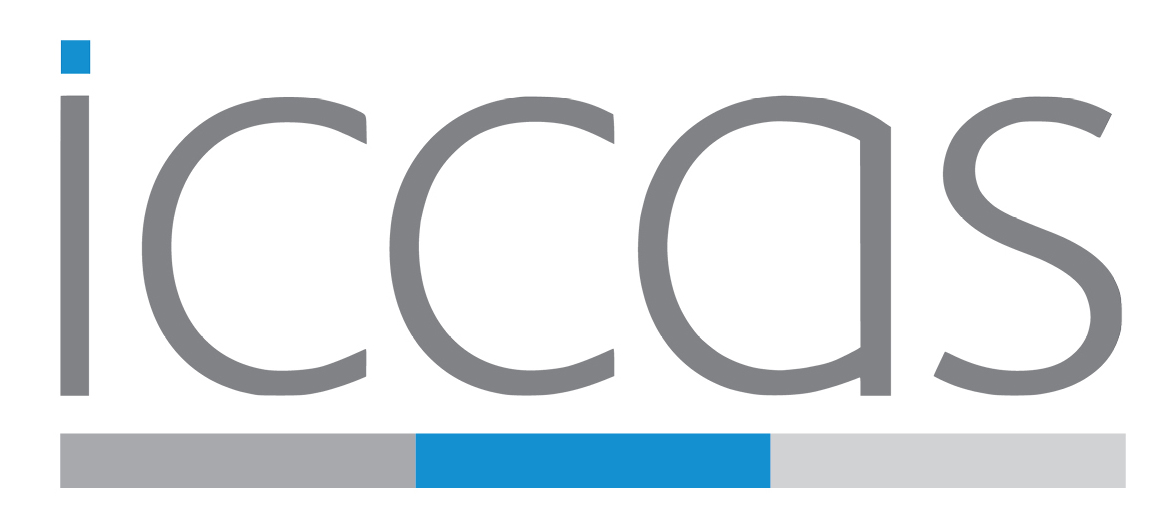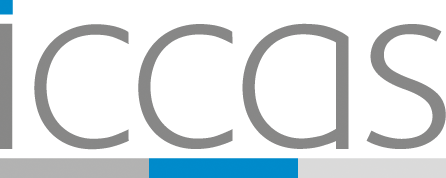06.05.2024
 TeleNoma
TeleNoma
The TeleNoma project aims to develop an improved communications infrastructure for mobile medical teams and facilities in rural and underserved areas. The core of the project is the use of nomadic radio networks and the integration of 5G technologies in an open platform to provide a cost-effective and scalable solution for telemedicine applications. The project aims to develop a hardware-software kit that establishes a temporary nomadic 5G radio network and realises a seamless connection of medical devices and applications for mobile medical teams in an easy-to-use solution. By combining nomadic radio networks and telemedicine, a new overall technical concept is to be developed that can bring medicine at the level of a maximum care provider to underserved areas. The availability of a suitable communication and medical IT infrastructure should enable efficient medical services such as diagnoses, treatments, vaccinations, consultations and preventive medical check-ups as well as the ad-hoc deployment of medical teams in special or crisis situations.
 Certainty
Certainty
The EU consortium “CERTAINTY – A Cellular Immunotherapy Virtual Twin for Personalized Cancer Treatment” has launched a 4.5-year project to implement virtual twin technology for cancer therapy personalization. Immunotherapies have gained traction in oncology, involving comprehensive data collection to guide diagnosis, treatment, and monitoring. ICCAS aims to harness these data through virtual twins that simulate disease prognosis and treatment outcomes. The project develops technological infrastructure for virtual twins, multimodal data evaluation, personalized predictions, and context-specific user interfaces to support clinical decision-making.
CERTAINTY integrates various analysis methods and prediction models into a comprehensive, multimodal representation of patients, enhancing personalized simulations and clinical decisions. A modular virtual twin for cancer treatment is being created, initially focusing on CAR T-cell therapies and multiple myeloma. The twin will reflect the unique pathophysiology of each patient, updating continuously during treatment, emphasizing molecular patterns, big data processing, machine learning, in vitro models, and mechanistic models. The project prioritizes secure interfaces for data access while considering socio-economic factors and future applications.
 MIRACLE-5
MIRACLE-5
The project aims to evaluate the performance of modern 5G campus networks for XR-based medical applications. The objective to examine collaborative XR-based telemedicine from a technological and user-centric standpoint, to assess its effectiveness, and suitability for clinical use. To achieve this, a technology demonstrator will be designed and developed to enable testing of an XR-telemedicine application over 5G campus networks. The resulting application will be evaluated by various end-users from relevant clinical fields. Anticipated challenges are synchronization of data coupled with low latency for the targeted cloud and edge-cloud use cases. The partnership between LeFx and ICCAS combines cutting-edge XR visualization with profound experience in campus networks based on 5G technologies for medical applications. Collaboration with Telefonica further enables the employment of modern managed service networks, which can be used in addition to ICCAS’s own 5G campus network. These networks will be managed and modified for the intended XR applications. Medical use cases for the technological demonstrator will be developed and tested by a consortium of clinical experts from Helios Parkkankenhaus Leipzig and the Universitätsklinik Leipzig. The UML contributes its extensive medical expertise through collaboration with specialized clinics, its own expertise with the development of AR/XR applications, as well as experience in establishing and operating 5G campus networks.
19.04.2023
 Open5GPacemaker
Open5GPacemaker
The focus of the project is on the interoperability of medical devices and high-bit-rate wireless data transmission using 5G, among other technologies. The goal of ICCAS in the project.Open5GPaceMaker is to integrate Time Sensitive Networks (TSN) into an existing medical device in a hospital environment. To achieve this goal, the clinical requirements for signal transmission in medical devices, as well as current technical solutions from medical device manufacturers and communication technology vendors.
For Open5GPaceMaker, a demonstrator will be produced that allows real-time wireless transmission of its control commands within an operating room using TSN over 5G. Through an existing and long-standing collaboration with the University Hospital Leipzig, realistic tests of the developed demonstrators are performed. On the level of communications engineering, ICCAS works closely with project partners and contributes experience from the field of medical applications. In cooperation with the University Hospital Leipzig, the clinical requirements for TSN over 5G in a hospital environment will be determined and made available to the project partners. The results will be implemented and tested in the LivingLab
26.10.2023
 VOLTA
VOLTA
Due to rapid advances in medical and pharmacological research, physicians today have increasingly effective options for the treatment of cancer. However, as the appropriate drugs are increasingly tailored to the specific characteristics of the patient and disease, new challenges arise in taking into account the complex diagnostic data and available therapeutic information (e.g. clinical trials). Since 2020, the Innovation Center Computer Assisted Surgery (ICCAS) at Leipzig University Medical Center, together with the Clinic for Hematology, Cell Therapy and Hemostaseology at Leipzig University Hospital, has been developing the IT platform “KAIT” – a comprehensive system for the analysis of medical information, which is intended to support the process of therapy decision-making in the clinical picture of multiple myeloma in the long term. The aim is to provide the treating physicians with all the latest information on the available therapeutic options so that every decision can be made on the basis of the latest findings. This will make an important contribution to the treatment of myeloma patients in Germany, regardless of where they receive medical care. Within the VOLTA project, this new and innovative form of clinical assistance will be further developed and extensively tested and optimized with clinical experts. These measures will ensure that “KAIT” can make a reliable and safe contribution to everyday clinical practice in the long term.
06.04.2023
 RescEU EMT
RescEU EMT
The European medical response system is comprised of first responder units that are operating quickly and lightly. On occurring disasters (e.g., earthquakes, tsunamis, floods, etc.), these Emergency Medical Teams (EMT) are deployed on disaster relief missions to support the local medical system and avert humanitarian crises. As part of the “RescEU EMT” project, the European medical response system is being expanded to include modular, flexible units and special cells.
The “EMT Operating System” (EOS) is a field hospital information system, which is tailored to the requirements of EMT on disaster relief missions. Its idea was created and designed during the EUMFH-Project. The system supports the whole patient treatment process from triage to discharge and is highly configurable to adapt to the needs of the EMT. Despite EOS being primarily designed as an electronic patient record, it also includes essential functions for EMT mission and field hospital management. Besides patient management and treatment documentation, EOS enables quick department configuration, visualization of important hospital key performance indicators (patient admissions, triage category count, department workload, etc.) and reporting functionalities (e.g. to local government or WHO). Thus, EOS plays an essential role in monitoring and assessing the current situation and performance on a strategic and tactical level.
EOS provides highly customizable functionalities. They can be adjusted to the specific frameworks of different EMT entities or other requirements by specialized teams, e.g. Burn Assessment Teams. Generally speaking, EOS includes digital documentation and management of the usual processes within an EMT. However, detailed characteristics can differ.
EOS relies heavily on structured data entry and storage (in contrast to free texts). This ensures high information quality and supports fast and easy data input as well as automatic information aggregation in databases. The latter benefits the reporting obligation and allows for comparison between different missions or EMT installations.
05.04.2023
 avatera Side-Docking
avatera Side-Docking
Under commission by the avatera medical GmbH (https://www.avatera.eu/home), ICCAS is investigating the possibilities to optimize the positioning principles of a novel robotic system for laparoscopic interventions. In cooperation with the urology department of the University of Leipzig Medical Center, the requirements for the pre-positioning of the system at the OR-table were defined and transferred into robotic workspace simulations.
The aim of this work is to provide an intuitive procedure for the docking process of the robot at the OR-table and an optimized positioning for the robot arms at the patient for the best possible workspace during the intervention. ICCAS developed a guidance manual for the side docking of the system and currently investigates the feasibility for radical prostatectomies and combined hysterectomies and Lymphadenectomies.
 VISION-CRE
VISION-CRE
In practice, medical decision-making to determine suitable therapeutic approaches for an individual patient is subject to both a medical and a regulatory framework. Indication-specific guidelines, which indicate the treatment options approved (and thus applicable) in the respective health care system, form the formal basis for this. Although physicians can also act outside of these guidelines (so-called off-label use), they usually need good reasons and the approval of the respective payer. Furthermore, clinical trials are of course an essential factor in the evaluation of the best possible therapeutic option, although this aspect cannot be attributed to routine care and is dependent on numerous external factors (range of trials, suitability of the patient, randomization, etc.).
The fundamental question in any therapy-associated decision-making process is which available option offers the highest chance of success with equally low risk for the individual clinical picture of a patient. However, due to the heterogeneity of the individual and the disease, this consideration is very complex and requires the parallel consideration of multiple factors. The limitation of the therapeutic scope of action facilitating this circumstance does not solve the problem of the cognitive simulation of all possible implications in order to determine an appropriate optimum. Furthermore, there is the legitimate question which circumstance can be regarded as optimal at all, since the definition of success or failure may differ between therapist and patient. For example, a therapy could lead to tremendous clinical success, but equally come with the high risk of an invasive side effect. These sometimes life-changing decisions therefore require a high level of safety, education, and communication on an equal footing between all parties involved.
A technical possibility to provide assistance in the process of medical decision making are clinical decision support systems, which match specific characteristics of a patient (e.g. clinical findings) with a previously created knowledge base to quantitatively evaluate all available options. The VISION-CRE project therefore focuses on the establishment of a “Cognitive Reasoning Engine (CRE)”, which complements the guideline-based specification of possible therapy options with a novel evidence-based evaluation level. The overall goal is to extend the existing decision support tools by evaluating already collected and recorded empirical data of the sequence: (1) patient:in, (2)therapy and (3) resulting reaction in order to draw valuable conclusions for the treatment of patients.
 GenoMed4All
GenoMed4All
The GenoMed4All project is an EU-wide initiative for the establishment of a network-infrastructure to facilitate the exchange of clinical data in a federated learning framework. By integrating valuable clinical data up to multi-OMICS levels, the project aims to significantly improve quantitative analysis using machine learning (ML) and artificial intelligence (AI) methods. GenoMed4All focuses on a range of hematological diseases, which are becoming increasingly complex due to the particularly advanced utilization of precision diagnostics and personalized therapies.
In partnership with the Clinic and Polyclinic for Hematology, Cell Therapy and Hemostaseology at the University of Leipzig Medical Center, ICCAS is contributing to the mplementation of the federated data integration mechanisms as well as advanced data standardization based on HL7 FHIR.
External project site: https://genomed4all.eu
 SaxoCell
SaxoCell
In the SaxoCell Systems project, ICCAS is developing mechanisms for secure tracking of necessary resources (analog and digital) in the context of ATMP development (e.g., findings, cells, pharmaceutical materials, etc.) on the basis of formal process models. For this purpose, the involved assets are first defined in the form of interoperable (HL7 FHIR) resources. Then, these digital images are instantiated within an IT platform based on a blockchain infrastructure and compared to an ideal process model with the principles of Good Manufacturing Practice (GMP). In the context of the SaxoCell overall project, the resulting supply chain management solution is intended to enable seamless traceability for ATMP manufacturing processes in order to enable superior and sustainable quality management in all areas of the intended platform.
External project page: https://saxocell.de




